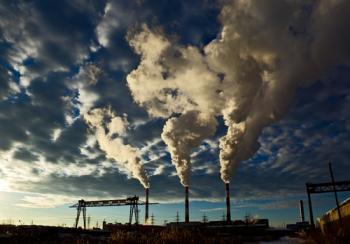Pollution
 How Big of a Problem is Pollution?
How Big of a Problem is Pollution?
With the technological advances made in the last century, humans have made a much more significant and in some ways detrimental impact on the Earth. Many organizations and even countries have begun to take a hard look at man-made impact on the earth and have responded by taking action in order to reduce this and protect the environment from pollution. There are many different types of pollution that need to be concerned with.
In the United States, the Environmental Protection Agency is Federal government agency that works to protect human health and environment. The agency works in various ways and at all levels of the government in order to reduce the effects of different voluntary pollution. So far, they have helped pass major regulation regarding the pollution in the air, land, and water as well as regulations on hazardous waste.
Because of modern industrialization, air pollution is very commonly observed. This can happen when chemicals, small particles, or biological materials are found in the air. Several acts have been passed in response to this from 1955 to 1990. The most noted is the Clean Air Act of 1963, which addressed acid rain, toxic air pollution, ozone depletion, and more. Since then, many amendments have been placed to regulate other issues such as greenhouse gases which is are caused by air pollution.
The Environmental Protection Agency also looks at water pollution, particularly point and non-point. Point water pollution is caused by sources that are stationary, such as factories while non-point sources are less define and can include mining activities and agricultural runoff. The Clean Water Act was enacted to control and reduce water pollution. Other acts have been created in order to regulate drinking water and create water efficient products.
Land Pollution is another major concern that is caused by human activities. The largest problems come from improper use of the land, for example through mineral exploitation, improper use waste of hazardous materials, and industrialization of the land.
Currently one of the biggest environmental concerns is global warming, which has been demonstrated to largely be the result of human actions. This includes the increase of greenhouse gases, for example, through fossil fuel burning and other polluting technology.
Many different acts have been passed in attempt to remedy or at the very least reduce these pollution and environmental problems. Some of them include the National Environmental Policy, the Wilderness act, Solid Waste Disposal Act, Resource Conservation and Recovery Act, and the Comprehensive Environmental Response, Compensation, and Liability Act.
Other government agencies have also become proactive about reducing and managing pollution. For example, the U.S. Small Business Administration created the Pollution Control Program which offered loans through the SBA to businesses that are working to prevent, reduce, or control any form of pollution.
Related Topics
- National Environmental Policy Act
- Climate Change
- Environmental Policy Act Text
- Quick Overview to Environmental Law
- Animal Laws Quick Overview
- Air Pollution Overview
- Federal Regulations At A Glance
- Clean Energy Jobs and American Power Act (Full Text )
- Environmental Law Overview
- Know Your Animal Cruelty Cases